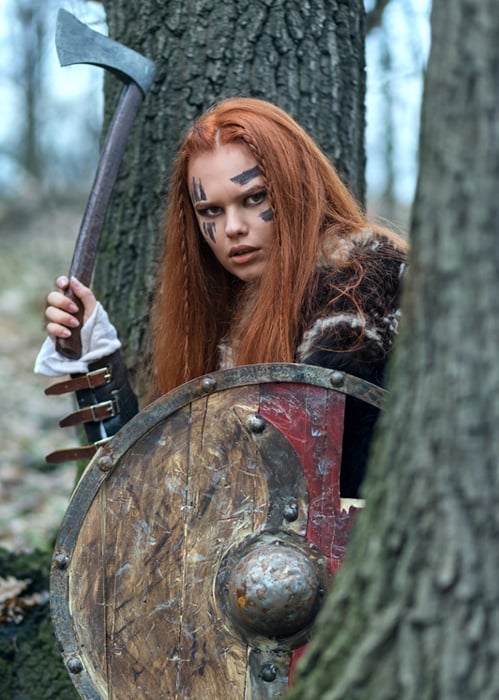
Eight Surprising Things You Should Know About the Celts
The Celts were a distinct ethnic group made up of tribes spread across Europe. They shared similar languages, traditions, religions, and cultural practices and were known for their fierceness in battle and the fact the Romans perceived them as a culture of barbarians. Even the name given to them by the Romans (Galli) translates to barbarian. Although the first mentions of the Celts were in Roman texts from around the 7 th Century AD, the Celtic culture is thought to have emerged around 1200 BC.
Despite the picture the Romans painted of a savage and brutish society of uncultured, unrestrained ruffians, their culture was a complex one. Their distinctive artistic style has survived into the 21 st century, likewise some remnants of their traditions and language. The way the Romans depicted the Celts has influenced our modern opinions of their society, as evidenced by popular depictions like the Asterix comics, but there are a lot of fascinating facts about Celtic society which show a different side of the Celts altogether.
1. The Celts Did Not Originate in Ireland or Scotland
Today, people think of the Celtic culture as being a part of Irish and Scottish heritage. The instantly recognizable Celtic art style is something people associate with Ireland, and movies such as Braveheart cement the idea that the Celts were present in Scotland. Furthermore, most British school children are taught about Hadrian’s Wall, built by the Roman emperor Hadrian in 122 AD to keep the Picts, a Celtic tribe in modern Scotland, confined to the North.
So, it comes as a surprise to learn that the Celts were not originally from either of these regions. In fact, the earliest evidence of Celtic culture is from the site of Hallstatt, Austria. The site has over 1000 burials with Celtic features, dated to approximately 1200 BC.

Celtic warrior. (Gorodenkoff / Adobe)
2. The Celts Paid Attention to Their Hygiene
Thanks to the Roman accounts, we tend to think of the Celts as scruffy, dirty, and smelly. However, the archaeological evidence shows that this is far from true. Celtic sites have an abundance of grooming tools, such as combs and hair pins. There is even evidence that it is the Celts introduced the Romans to soap, and that it was mandatory in some tribes for the men to bathe before enjoying their evening meal.

The reverse side of a Celtic bronze mirror from 50 BC. (Rotatebot / Public Domain)
3. They Were Head-Hunters
Although many of the Roman ideas about the Celts were exaggerated or entirely inaccurate, they did have some traditions which were barbaric. One of the grimmer aspects of Celtic tradition was the practice of head-hunting. The Celts believed that human souls resided in heads, and so after victory in battle Celtic warriors would decapitate their enemies. Having a large collection of enemy heads was a sign of prestige to the Celts, and they would even go so far as to decorate the doors to their houses with the heads of their enemies to show off how successful they were in battle. At one site in France there is even a pillar with special niches carved out to display severed heads.
4. They Developed Weaponry Long Before Their Rivals
The fact the Celts were able to spread across such a large part of Europe and survive so long was probably due to their advanced weaponry. The Hallstatt Culture was one of the first to adopt iron for weapons, which was far superior to the bronze weapons used by their rivals. This edge on their competitors – perhaps more accurately described as their victims - was something they took full advantage of to grow their empire and spread far further than would otherwise have been possible.

Celtic swords 120 BC to 43 AD. (Völkerwanderer / Public Domain)
5. They Had Their Own Complex Calendar
While the Romans had the Julian calendar, the Celts had their own calendar for predicting the seasons and calculating time. The Coligny calendar was found in woods near Coligny, France in the 1890s, and consisted of a large bronze tablet with intricate engravings. It was originally a mystery what the tablet, which is 1.48 meters x 0.9 meters (4’10” x 2’11”), represented though it was ascertained to have been made during the 2 nd Century based on the artifacts it was found with.
When it was reconstructed, it was finally revealed to be a calendar which covered 5 years divided into 12 months per year with an extra month once every third year which functioned in the same way as a leap year. The calendar was extremely complex, and even accounted for the different times the sun and moon took to circle the earth which meant it kept time accurately, unlike the Julian calendar which sometimes resulted in the Romans celebrating the start of Spring in August. The calendar was probably created and used by druids and functioned partly to help with the timing of festivals and rituals.
6. They Were Very Skilled at Horse Riding
The Celts were known for their prowess in battle and in particular for their skills on horseback. They had a special kind of sword called a Spatha, worshipped a horse goddess called Epona and were even recruited into the cavalry of the Roman armies after their regions had been conquered. They would also use horse drawn carriages in battle and were very skilled in this technique. They were known to decorate their horses and chariots with the heads of their enemies to show how many people they had killed in battle and so intimidate the enemy.

Celtic Horsemen. (Erica Guilane-Nachez / Adobe)
7. They Worshipped a Huge Number of Gods and Goddesses
There were hundreds of gods and goddesses in the Celtic pantheon, and some of them were so niche that only a single tribe or even family worshipped them. The druids, who led religious ceremonies, were in charge of rituals which included sacrifice. These ceremonies would usually take place at shrines in natural locations such as hilltops and streams, but there were some secret ceremonies which would be conducted in hidden sacred groves. The druids were very important in Celtic society as they served as judges, teachers, and lore-keepers.
8. Celtic Women Could be Warriors Too
Unlike many ancient civilizations, there are many accounts of women who were warriors in the Celtic society. One such female warrior is Boudicca who infamously fought to prevent the Romans from invading her territory. When she was eventually defeated, she committed suicide by drinking poison rather than submitting to the Romans. There are many other contemporary accounts of women participating in and even leading battles. The Romans found the idea of female warriors particularly shocking, and the writers Posidonius and Strabo both described an island of Celtic women where men could not venture for fear of death.
- Human bones in pot may reflect gruesome ritual conducted by army of Queen Boudicca
- Ancient Signs of Pride and Power: Unravelling the Secrets Behind Irish and Celtic Symbols
- Exploring the Little Known History of Celtic Warriors in Egypt

Celtic woman warrior woman ready to attack. (danrentea / Adobe)
Many of the Roman accounts of the Celts are propaganda designed to provoke an image of wild savages, both to excuse their failures against a people who fought like wild animals and to make their victories over them even more glorious. But despite this propaganda and fearmongering there are some elements of truth – the Celts were fearsome in battle, and the practice of headhunting in particular was something which must have helped to cultivate the image of a barbaric people who acted like wild animals. It should be remembered in the case of the Celts that history is written by the victors. It was easy for the Romans to erase the accomplishments of this complex society, particularly when they themselves had been trying to avoid the headhunters!
Top image: The Celts had many female warriors Source: Syda Productions / Adobe Stock
References
Celtic Life. 2017. Top Ten Facts About the Celts. [Online] Available at: https://celticlife.com/top-ten-facts-about-the-celts/
Celtic Wedding Rings. Date Unknown. Ten Interesting Facts About The Celts. [Online] Available at: https://www.celtic-weddingrings.com/celtic-history/10-interesting-facts-about-the-celts
Collis, C. 2003. The Celts: Origins, Myths and Inventions. Stroud: Tempus Publishing
Hadian’s Wall Country. Date unknown. Hadrian’s Wall: The Facts. [Online] Available at: https://hadrianswallcountry.co.uk/hadrians-wall/hadrian%E2%80%99s-wall-facts
Klimans, K. 2019. 42 Brutal Facts About The Celts, The Scourge Of Ancient Rome. [Online] Available at: https://www.factinate.com/things/facts-celts/
Koch, J. 2005. Celtic Culture: a historical encyclopedia. Santa Barbara. [Online] Available at: https://www.academia.edu/7205055/Celtic_Culture_A_Historical_Encyclopedia_
Matthews, C. 1989. The Elements of the Celtic Tradition. Element Books ltd.
















Comments
the Onna-Bugeisha (lit Women warrior) the wives of Samurrai were basicly the home guard while the men went to fight in the field usually favoring pole arms
but yea both had simmilar outlooks on a lot of things (except armor)
I saw a television program last month about the Samurai in Japan.
This program discussed how the Samurai would take the heads of their defeated opponents and display them. It also referenced the role of female Samurai warriors.
This was on a channel broadcast in UK and, unfortunately, I cannot recall the name of the program.
sounds a bit like how some of the Tribes are treated in North america
And there are still 6 Celtic Nations some of which not recognised as nations, those not being nations conveniently ignored by historians when any mention of Celts arises. Meaning you probably don’t know as much about Celts as you may think.
In Anglia et Cornubia.
Another cracking read from Sarah.
Pages